
Perhaps no dental procedure done on a routine basis contains more uncertainty and yet holds more importance than that of the dental impression. Every dentist and dental team has, at some point, anxiously awaited to see if the fruit of their labor has been captured correctly in the negative form of an impression. There are certainly many variables that go into a successful outcome, but, ultimately, material choice is the one that influences all others and perhaps can make the biggest difference. The development of digital dental impression systems offers a feasible alternative to the traditional workflow. Utilizing both systems is certainly within reason as no system seems foolproof in today’s age of impression techniques.
Ultimately, we would all agree that a dental impression provides the foundation for all restorative procedures. The task of achieving accurate impressions can present many challenges with regard to techniques and materials. While the debate over material selection is ongoing, most dentists agree that the use of correct technique remains the most important factor in creating ideal impressions (Figure 1). Proper preparation, retraction cords, material mixing, application, and setting time all affect the accuracy of an impression (Figure 2). Additional challenges include capturing the correct margins and details, maintaining patient comfort, and obtaining accurate occlusion records (Figures 3 and 4).
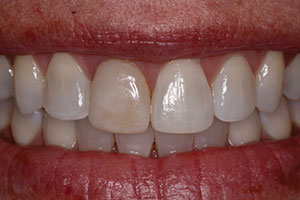 |
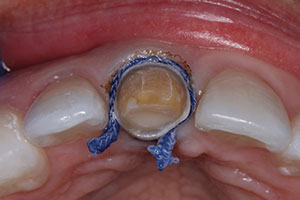 |
| Figure 1. Restoring a single central incisor can certainly be a huge challenge for the restorative dentist. Flawless clinical impressions are a must. | Figure 2. Tissue management is critical to allow your impression material to capture important details for an accurate and quality impression. |
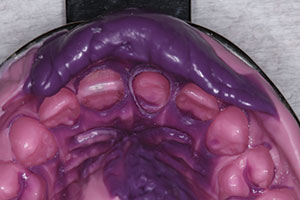 |
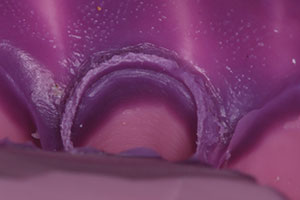 |
| Figure 3. Utilizing First Quarter VPS (Zest Dental Solutions) impression material in a heavy body/light body combination, showing the great detail that was captured. | Figure 4. The facial view, showing adequate flash to highlight the margin design of the preparation. The high tear strength of First Quarter VPS allows for increased predictability. |
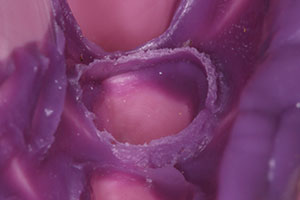 |
 |
| Figure 5. The distal view, highlighting the hydrophilicity of First Quarter VPS as well as the detail provided. | Figure 6. The mesial view shows the predictability of First Half VPS (Zest Dental Solutions) that will certainly lead to an improved clinical performance and predictable outcome. |
When evaluating impression materials, 3 components are key to success. First, to capture accurate and precise details, impression materials used intraorally need to work in the presence of moisture (ie, be hydrophilic) not just when cured but, more importantly, when they are uncured (Figure 5). Second, impression materials must be strong at the time of removal from the mouth to prevent tearing. Impression material that is syringed into a sulcus results in thin sections of material that, under duress, need to have the physical properties necessary (ie, tear strength) to ensure a lack of tearing and a flawless clinical impression. Third, one must have an array of materials that will allow for flexibility, as no single impression material will satisfy the infinite number of clinical situations. A fast-set material may be ideal for single-unit cases, but larger prosthetic cases or removable denture impressions may require options for longer setting times and viscosities. In my practice, I utilize Zest Dental Solutions’ line of Start VPS impression materials (Figure 6). They offer a variety of set times to match my needs, regardless of both the number of restorations and impression technique. No matter what the technique is, capturing flawless clinical impressions with Start VPS is not a concern. In the end, we are all looking for accuracy and quality as the by-product of our hard work.
For more information, call Zest Dental Solutions toll-free at (800) 262-2310 or visit zestdent.com.
Dr. Schmedding has been practicing cosmetic and restorative dentistry for the past 25 years. He is an honors graduate of the University of the Pacific, Arthur A. Dugoni School of Dentistry. He currently maintains a private practice in Walnut Creek, Calif. Dr. Schmedding is one of approximately 480 dentists worldwide to achieve accreditation status in the American Academy of Cosmetic Dentistry. He also maintains a Diplomate status with the American Board of Cosmetic and Esthetic Dentistry. He consults with manufacturers on the implementation and testing of new restorative products being brought to market. He is an internationally recognized speaker and educator for aesthetic and restorative dentistry.

